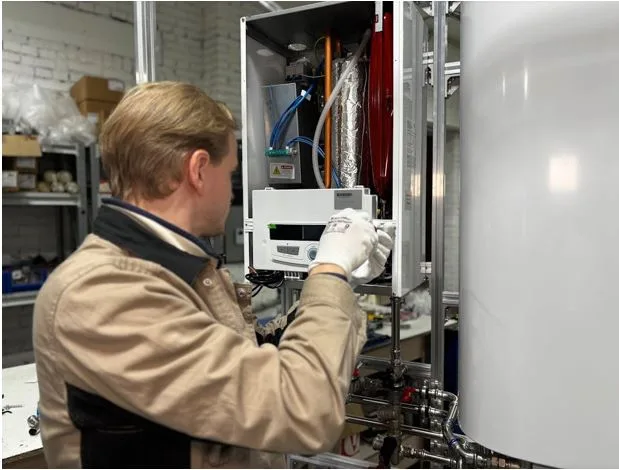First-Time Homebuyer Programs in 2025: What You Need to Know
Buying your first home feels like stepping into a new chapter—exciting, full of possibility, and yes, a little overwhelming. Between rising prices, competitive offers, and the sheer weight of that down payment, it’s easy to wonder: Is homeownership even within reach anymore?
That’s where first-time homebuyer programs come in. Quietly working behind the scenes, these local, state, and federal programs are designed to make your path to ownership just a bit smoother. If you’re navigating 2025’s housing market for the first time, understanding how these programs work could make all the difference—not just in what you can afford, but in how confident you feel getting there.
This guide is your starting point. We’ll break down the different types of assistance available, what it takes to qualify, and which state-run programs are worth exploring right now.
What Are First-Time Homebuyer Programs?
First-time homebuyer programs are government-backed initiatives that help new buyers get into homes with less financial strain. They offer support where most people struggle—usually the upfront costs.
This support often takes the form of:
- Grants that reduce your down payment or closing costs
- Forgivable loans that don’t need to be repaid if you stay in your home for a few years
- Deferred second mortgages with zero interest, repayable only when you sell or refinance
These programs aren’t one-size-fits-all. Some are state-run, others are local. Most work in tandem with conventional or government-backed loans (like FHA or USDA). What ties them all together is their mission: helping buyers overcome that first big hurdle.
Types of Financial Assistance Available
Forgivable Loans and Grants
If you’re short on cash for a down payment or closing costs, forgivable loans and grants are often the most appealing type of assistance. These are not just loans with friendly terms—they’re often free money, as long as you meet certain requirements.
Take the Illinois IHDA Access Forgivable program. It offers up to $6,000 in assistance, and as long as you stay in your home for 10 years, you won’t owe a cent back.
Other states, like Iowa, provide grants up to $2,500 that never need to be repaid, and some cities even offer special bonuses for veterans, teachers, or first-generation buyers.
Deferred Second Mortgages
Deferred loans are another common structure. These are typically second mortgages with 0% interest and no monthly payments. You only repay them when you sell, refinance, or pay off your first mortgage.
For example, Minnesota Housing’s Start Up program offers down payment and closing cost loans that don’t interfere with your main mortgage. It’s a way to “borrow now, pay later”—without extra interest stacking up.
Who Qualifies for First-Time Homebuyer Programs?
First, don’t assume you’re disqualified just because you’ve owned a home in the past. Most programs define a first-time homebuyer as someone who hasn’t owned in the past three years.
Beyond that, qualifications usually include:
- Income limits – These vary by location and household size. Some programs are designed for low-to-moderate income buyers; others stretch into higher brackets.
- Purchase price caps – To keep the focus on affordable housing, most programs restrict the maximum home price.
- Credit score requirements – While some programs accept scores as low as 620, many require at least 640–660.
- Mandatory education – A homebuyer education course is often required, usually from a HUD-approved provider. These sessions are designed to help you understand budgeting, mortgage terms, and what to expect as a new homeowner.
Some programs even offer enhanced benefits to first-generation homebuyers, military members, or those buying in “targeted areas” where revitalization is encouraged.
2025 Program Highlights from Across the U.S.
Illinois – IHDA Access Programs
Illinois offers three tiers of assistance through the Illinois Housing Development Authority. The Access Forgivable program provides up to $6,000 in down payment assistance that’s completely forgiven over time. There’s also an Access Deferred option, offering up to $7,500 that you repay only if you move or refinance.
These programs pair with FHA, VA, USDA, and conventional loans, and they require a minimum credit score of 640.
Minnesota – Start Up and Step Up Programs
Minnesota Housing focuses on helping buyers navigate the upfront costs with structured second mortgages. The Start Up program is tailored to first-time buyers and includes required education, while Step Up allows repeat buyers to qualify if their income and home price meet the limits.
Qualified buyers can receive up to $18,000 in assistance, depending on the program and county.
Iowa – FirstHome and Military Assistance
Iowa’s FirstHome program offers a competitive fixed-rate loan, with optional down payment support. Buyers can access a $2,500 grant or a second loan covering up to 5% of the home’s value.
There’s also a Military Homeownership Assistance grant worth $5,000 for service members and veterans—one of the most generous in the country.
Garden Grove, CA – GAP Financing
Though currently paused for new applications, Garden Grove’s first-time buyer program is worth noting. It provides 0% interest deferred loans—as much as $110,000 for low-income families—structured to fill the gap between what you can borrow and the price of the home.
Programs like this show just how tailored and generous local options can be, especially in high-cost markets like California.
How to Apply—and What to Expect
Applying for a first-time homebuyer program isn’t as complicated as it sounds, but it does take some planning. Most programs require:
- Pre-approval with a participating lender
- Completion of a homebuyer education course
- Proof of income, employment, and credit history
- Documentation about the property you intend to purchase
The key is timing. Some programs operate on a first-come, first-served basis, and funding can run out. If you’re planning to buy this year, now’s the time to get your paperwork in order.
A smart first move? Talk to a lender who works with these programs. They’ll help you identify which ones you qualify for and guide you through the process step by step.
Final Tips for First-Time Buyers in 2025
If you’re buying your first home this year, know this: you’re not on your own. The number of first-time homebuyer programs available in 2025 is higher than ever—and many of them go unused simply because buyers don’t know they exist.
Take the time to explore what your state or city offers. You might find a grant you never expected, or a loan that makes that dream home suddenly affordable. And remember, a well-structured support program doesn’t just save you money—it builds confidence.
You don’t have to figure it all out in one day. But every step you take, from learning the basics to finishing that education course, brings you closer to the keys in your hand.


